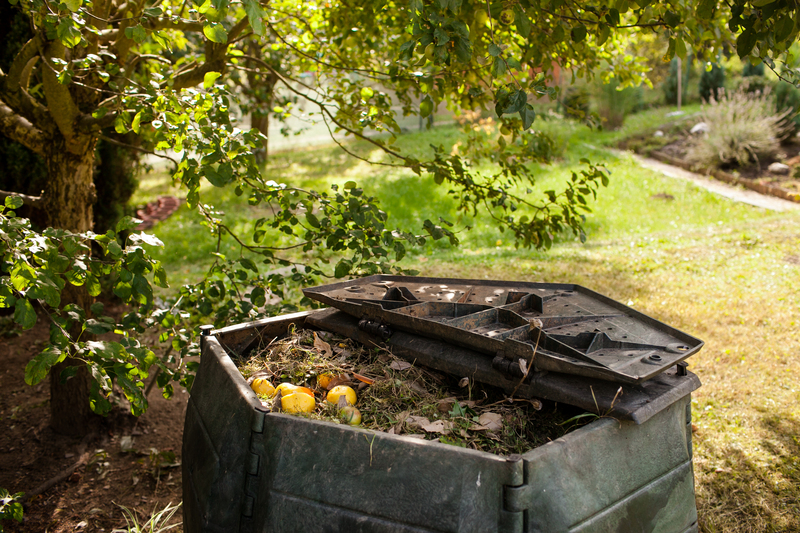Safeguard Your Community with Proper PPE Waste Disposal
The global health landscape has been drastically reshaped in recent years, with personal protective equipment (PPE) becoming synonymous with safety in households, workplaces, and public spaces alike. While PPE such as masks, gloves, gowns, and face shields protect individuals from harmful agents, their improper disposal presents a significant risk to the environment and public health. Learning how to properly dispose of PPE waste can help safeguard your community, minimize environmental damage, and ensure a safer world for all.
Understanding PPE Waste: What Qualifies?
Before delving into safe disposal methods, it's essential to grasp what constitutes PPE waste. Items commonly considered as PPE include:
- Face masks (surgical, N95, and cloth masks)
- Disposable gloves (latex, nitrile, and vinyl)
- Face shields and protective eyewear
- Protective gowns and aprons
- Shoe covers
- Hair covers
When these items are used outside of sterile environments, they are often contaminated with biological material, chemicals, or debris. Improper PPE waste disposal allows bacteria, viruses, and toxins to spread into the community, making proper handling crucial.

The Dangers of Improper PPE Waste Disposal
Improperly discarded PPE poses multiple dangers:
- Health risks: Discarded masks and gloves can harbor pathogens, spreading diseases to sanitation workers and the public.
- Environmental impact: Single-use PPE items are primarily made of non-biodegradable plastic, contributing to pollution and harming wildlife when they end up in waterways or open landfills.
- Clogged sewage systems: Masks and gloves flushed down toilets or drains can cause severe blockages, leading to sanitation issues and costly repairs.
- Litter problem: Visible PPE litter in public areas undermines community aesthetics and can decrease the quality of communal living environments.
Best Practices for PPE Waste Disposal in Communities
1. Segregation of PPE Waste
The foundation of PPE waste management is segregation at the source. Encourage households, businesses, and institutions to separate used PPE from regular waste. Use color-coded bins or clearly marked containers to avoid confusion. Generally, red or yellow bins are designated for biomedical or hazardous waste.
2. Safe Handling and Bagging
Used PPE should be placed in a leak-proof bag or a double-bagged system to prevent leakage and cross-contamination. Sanitize hands before and after handling any PPE waste. If handling bulk PPE, wear appropriate PPE yourself.
3. Educate Your Community
Building awareness is critical. Organize workshops, distribute flyers, or send newsletters about the importance of proper PPE waste disposal and the risks of mishandling. Use clear visuals and simple instructions for maximum understanding.
4. Setting Up Disposal Infrastructure
Strategically place labeled PPE disposal bins in public spaces such as offices, schools, shopping malls, bus stops, and parks. These should be emptied regularly by trained personnel using safe practices and transported to designated treatment facilities.
5. Cooperation with Local Waste Management Authorities
Partner with municipal waste services to ensure a robust collection and disposal system for PPE waste. Waste collectors should be trained and supplied with PPE themselves to minimize occupational hazards.
6. Disinfection Prior to Disposal
Where possible, disinfection of PPE waste (especially from non-medical environments) helps reduce the risk to waste handlers. Spraying a disinfectant on bagged PPE before disposal can offer an extra layer of protection.
PPE Waste Disposal in Healthcare Settings
Healthcare facilities generate massive amounts of PPE waste daily. Disposal here is governed by stringent biomedical waste protocols:
- Dedicated bins: Hospitals should have easily accessible, clearly labeled biomedical waste bins for collecting used PPE.
- On-site storage: Store collected waste in a secured, ventilated area until transportation to a treatment facility.
- Treatment: Most PPE waste is treated using incineration, autoclaving, or chemical disinfection, ensuring pathogens are destroyed prior to landfill disposal.
- Staff training: Train all healthcare staff on proper handling, transport, and storage protocols to prevent accidental cross-contamination.
Guidelines for Households
The rise in PPE use at home means every resident plays a role in PPE waste management. Here's how to safely dispose of PPE at home:
- Do not recycle: PPE, such as masks and gloves, should never go into recycling bins as they can contaminate recycling streams and endanger workers.
- Bag it securely: Place used PPE in a plastic bag, tie it tightly, and put it in the general waste bin.
- Wash hands: Always wash your hands with soap and water after handling used PPE.
- Follow community guidelines: If your local authority has issued specific instructions for PPE waste disposal, adhere to them strictly.
The Environmental Impact of PPE Waste--and How to Minimize It
The global increase in single-use PPE has led to billions of items entering our waste streams--most of which are made from plastics that take centuries to degrade. In addition to responsible disposal, communities should seek ways to reduce environmental burden:
- Promote reusable PPE: Encourage the use of washable masks and face shields wherever possible, following proper sterilization routines.
- Support recycling programs: Some specialized companies recycle certain PPE materials (like polypropylene). Research if such services are available in your region.
- Advocate responsible consumption: Purchase only as much PPE as necessary to minimize waste and stockpiling.
Innovative Solutions and Technologies
Technologies are emerging for smarter PPE waste disposal:
- Mobile incinerators for on-site waste treatment in remote areas.
- Plastic-to-fuel processes that convert PPE plastics into usable energy.
- Biodegradable PPE made from natural fibers, which decompose easily in composting environments.
While these methods evolve, community engagement in proper PPE waste disposal remains the cornerstone of effective management.
The Role of Local Government in PPE Waste Management
Local governments are vital to the safeguarding of communities through organized PPE waste collection and processing. Key actions include:
- Providing clear instructions for residents and businesses on collection schedules, bin types, and drop-off sites.
- Implementing monitoring systems to track the volume of PPE waste and identify hotspots for littering.
- Hosting public education campaigns about the health and environmental risks of improper PPE disposal.
- Incentivizing proper disposal through fines or rewards for compliance with local waste regulations.
Schools and Offices: Keeping Communal Spaces Safe
Schools, offices, and communal buildings are high-traffic environments where PPE is regularly used and disposed of. To maintain safety:
- Supply designated disposal bins near entrances, exits, and shared areas.
- Communicate policy: Post signs reminding everyone to dispose of PPE responsibly and maintain hygiene after touching disposal bins.
- Train janitorial staff on safe PPE waste handling and disposal methods to minimize their risk.
- Involve the community: Encourage a culture of accountability where all members look out for improper PPE litter and report issues to management.
Tackling PPE Waste in Public Spaces
Bus stops, parks, and urban centers face unique challenges due to high pedestrian volumes and limited oversight. Effective strategies include:
- Installing clearly marked PPE-only bins at frequent intervals; these should be emptied daily.
- Running anti-litter campaigns focusing on the dangers of PPE litter for wildlife and water sources.
- Mobilizing volunteers for regular PPE waste clean-up drives.
- Partnering with local businesses to provide disposable PPE stations and collection points for customers.

Personal Responsibility: Everyone's Role in PPE Waste Disposal
While systemic solutions are important, individual responsibility forms the first line of defense in preventing PPE pollution. Here are simple steps each person can take:
- Always carry a spare bag to store used PPE when bins are not immediately available.
- Remind others to dispose of PPE properly, especially in group settings or during community events.
- Report overflowing or missing PPE bins to local authorities to ensure timely action.
- Lead by example: Always dispose of your PPE correctly, encouraging peers and family members to do the same.
Conclusion: A Call to Action for Safer, Cleaner Communities
The necessity of PPE in our daily lives is undeniable, but with this necessity comes the shared responsibility of managing its aftermath.
Whether you are at home, at work, or out in your community, your mindful actions can make a significant difference. By following best practices, educating those around you, and supporting organized waste management systems, you contribute toward a healthier, more resilient community--today and for future generations.
Let's work together to safeguard our communities by ensuring proper PPE waste disposal becomes a universal standard, not an afterthought.
Remember:
- Segregate PPE waste from regular garbage.
- Use secure, labeled bins and bags.
- Educate your family, friends, and colleagues.
- Support eco-friendly alternatives and responsible consumption.
- Hold yourself and others accountable--every item properly disposed counts!
Together, we can safeguard our communities--one safely disposed mask at a time.
